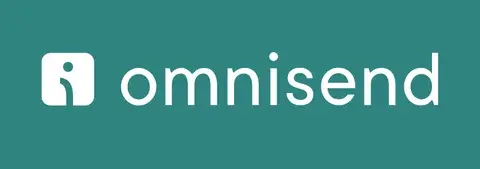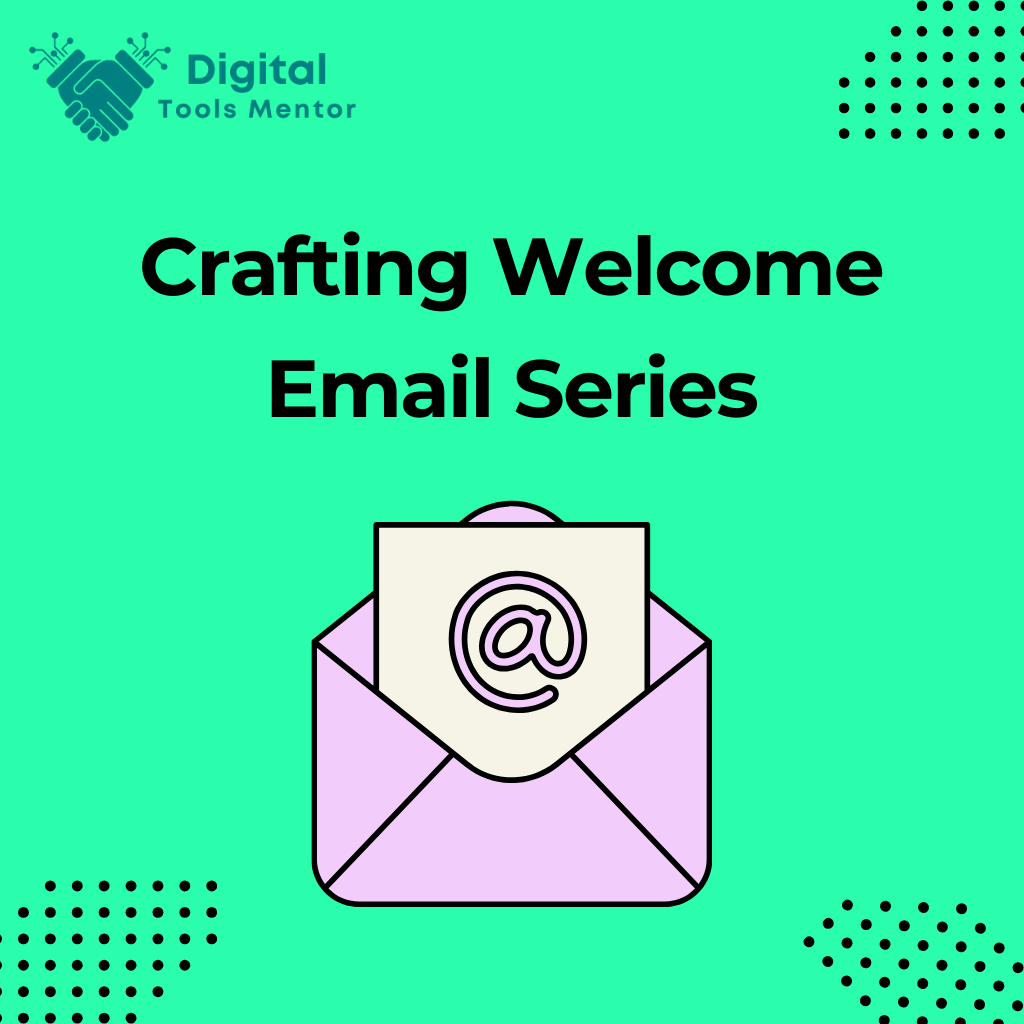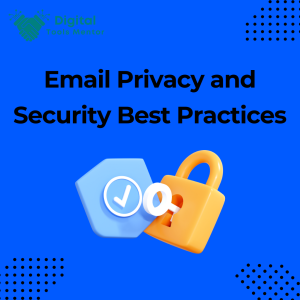Crafting Welcome Email Series: A Step-by-Step Guide
Welcome emails are the first point of contact between a brand and a new subscriber who has just signed up for an email list. This initial communication is a critical opportunity for a business to make a lasting first impression, establish the tone of future interactions, and begin nurturing a long-term relationship. Typically sent immediately after a user subscribes, these emails are designed to confirm the subscription, thank the user, and provide valuable information about what they can expect as part of the email community.
The importance of welcome emails cannot be overstated. They set the stage for ongoing engagement by:
- Confirming Subscription: Welcome emails serve as a reassurance that the subscription process was successful, reducing confusion and building trust.
- Boosting Engagement: With the highest open rates of any marketing emails, welcome emails are a powerful tool to engage customers right from the start.
- Introducing the Brand: They provide a prime opportunity to introduce your brand’s voice, values, and what sets you apart from competitors.
- Driving Action: Effective welcome emails can encourage new subscribers to take actions like completing a profile, making a first purchase, or following social media channels.
In this blog post, we will cover various aspects of crafting effective welcome emails, including the best practices for timing, creating compelling subject lines, designing the email, tailoring content, incorporating calls to action, personalizing messages, and using testing and optimization to improve performance. We will also explore examples and case studies to illustrate these points in action, providing you with actionable insights to enhance your own welcome email strategy.
Explore 23 Best Email Marketing Platforms in 2025
Setting Clear Objectives
Welcome emails serve several fundamental purposes that can significantly influence a subscriber’s perception and interaction with your brand. Understanding these goals helps tailor your approach to maximize the effectiveness of your initial engagement.
Primary Goals of Welcome Emails
- Introduce the Brand: The first goal of a welcome email is to introduce your brand. This isn’t just about stating your name; it’s about conveying your brand’s personality, values, and what you stand for. This sets the tone for all subsequent communications and helps establish a connection with new subscribers.
- Guide User Behavior: Welcome emails can guide new subscribers on what steps they should take next. This might include encouraging them to set preferences, visit your website, or take advantage of a first-time subscriber offer. Clear guidance helps integrate subscribers into your marketing ecosystem, enhancing their journey from passive observers to active participants.
- Foster Engagement: By starting off with high engagement through an effective welcome email, you’re more likely to keep engagement levels high in future communications. This includes getting subscribers used to opening your emails, interacting with your content, and taking desired actions.
Tailoring Objectives Based on Business Type and Audience
- E-commerce Businesses: For online stores, welcome emails might focus on incentivizing a first purchase through a special offer or discount code. Showcasing best-selling products or new arrivals can also be effective.
- Service Providers: If you’re offering a service, your welcome email could aim to get subscribers to book their first appointment or consultation. Providing information about service benefits and differentiating factors can help in decision-making.
- Content Creators and Bloggers: Here, the goal may be to encourage content consumption, whether it’s reading articles, downloading an e-book, or watching videos. Highlighting key resources or popular posts can draw new subscribers deeper into your content ecosystem.
- Nonprofits: For nonprofits, welcome emails often aim to educate new subscribers about their mission, ongoing projects, and how they can contribute or get involved. This might include a call to action to join a campaign or make a donation.
- B2B Companies: In a B2B context, welcome emails might focus on establishing credibility and starting a dialogue. Sharing whitepapers, case studies, or inviting subscribers to webinars can be effective tactics.
By clearly understanding and defining the objectives of your welcome emails, you can craft messages that resonate deeply with your audience and set the foundation for a strong, ongoing relationship. Tailoring these emails to reflect the nature of your business and the expectations of your audience ensures that your communications are both relevant and effective.

The Right Timing for Sending Welcome Emails
Timing is crucial in email marketing, especially when it comes to welcome emails. The initial interaction between a brand and a new subscriber sets the tone for future communications, making it essential to time these emails correctly to maximize engagement and effectiveness.
Best Practices for Timing Your Welcome Emails
- Immediate Delivery: The best time to send a welcome email is immediately after a user subscribes. This instant response ensures that your brand captures the interest of the subscriber while it’s still fresh in their mind. It also confirms to the subscriber that their sign-up was successful, providing reassurance and a sense of engagement right from the start.
- Consistency: If your welcome email includes a series (such as a multi-part onboarding sequence), it’s important to maintain consistent timing between emails. For example, sending the subsequent emails a day apart or a few days apart can keep the momentum going without overwhelming the subscriber.
Importance of Immediate Engagement After Subscription
Engaging subscribers immediately after they sign up can significantly impact their long-term interaction with your brand. Here are a few reasons why immediate engagement is vital:
- Attention Retention: People tend to remember and value quick responses. A prompt welcome email ensures your brand stays top-of-mind.
- Building Trust: Sending a welcome email right away helps build trust by demonstrating your brand’s efficiency and attention to customer interaction.
- Boosting Engagement Rates: Welcome emails typically have the highest open rates of all marketing emails, partly because the subscriber’s interest in your brand is at its peak immediately after signing up.
Automated Triggers for Sending Welcome Emails
Automating the process of sending welcome emails not only ensures timeliness but also maintains consistency and reduces the workload on your marketing team. Here’s how you can set up automated triggers:
- Subscription Event Triggers: Most email marketing platforms allow you to set up an automation trigger that sends out a welcome email as soon as someone subscribes to your list. This trigger is usually based on the completion of a subscription form on your website.
- Integration with Other Tools: If you use forms or subscription services that are not directly linked to your email marketing platform, ensure they are integrated properly so that a subscription event on any platform triggers the welcome email sequence.
- Segmentation and Personalization: Advanced automation setups can trigger different types of welcome emails based on the subscriber’s source, interests, or demographic information. This allows for more personalized and relevant email content.
By carefully planning the timing of your welcome emails and using automation tools effectively, you can ensure that your communications are not only timely but also tailored to meet the expectations and needs of your new subscribers. This strategic approach helps in building a strong foundation for a lasting and engaging relationship with each subscriber.
Crafting a Compelling Subject Line
The subject line of an email is often the first impression a subscriber has of your communication. In the context of welcome emails, where you’re establishing a relationship with a new subscriber, the importance of crafting an enticing subject line cannot be understated. It can be the deciding factor between an opened email and one that goes unread.
Tips for Writing Subject Lines that Entice Readers to Open the Email
- Keep It Short and Sweet: Subject lines that are concise and to the point tend to perform better. Aim for around 50 characters or fewer to ensure that the entire subject line is visible on most devices and email clients.
- Use Action-Oriented Language: Start with verbs that encourage action or convey a sense of urgency or excitement. This approach helps spark curiosity and prompts subscribers to find out more.
- Clarify the Benefit: Let your subscribers know what’s in it for them right from the subject line. Highlighting a benefit or what they can expect to gain from opening the email can significantly boost your open rates.
- Ask a Question: Subject lines that pose a relevant question can be very effective as they naturally provoke thought and engagement. Make sure the question is relevant to what you’re offering or addressing in the email.
- Use Numbers and Lists: Numbers and list-based subject lines set clear expectations for what the email contains, making them highly effective. For example, “5 Tips to Get Started with Your New Subscription.”
Examples of Effective Welcome Email Subject Lines
- “Welcome to [Brand]! Let’s Get Started”
- “You’re In! Get Ready to Unlock Exclusive Benefits”
- “Welcome, [Name]! Discover Your New Favorites Now”
- “Thanks for Joining! Your Special Offer Inside”
- “Start Your Journey with [Brand] Today”
The Role of Personalization in Increasing Open Rates
Personalization is a powerful tool in email marketing. It makes the recipient feel recognized and valued, which can lead to higher engagement rates. Here’s how personalization can enhance your welcome email subject lines:
- Use the Subscriber’s Name: Including the recipient’s name in the subject line can immediately make the email feel more personal and less like a bulk send. For example, “Welcome, [Name]! Here’s Your First Gift.”
- Segment by Behavior or Interest: If you have data about the subscriber’s behavior (like items they browsed on your site) or their interests (from the subscription form), use it to tailor the subject line. For example, “See What’s New in [Interest Category]!”
- Geolocation Personalization: Tailor the subject line to the subscriber’s location to make the content more relevant. For example, “Welcome, [Name]! Check Out What’s Popular in [City/Region].”
By combining these tips and personalizing your approach, you can significantly increase the likelihood that your welcome emails will not only be opened but also appreciated and acted upon. This first step in your email relationship is crucial in setting the tone for all future communications.
Designing Your Welcome Email
A well-designed welcome email plays a crucial role in captivating new subscribers and setting a professional tone for your brand. The visual appeal of your email can significantly impact how the message is perceived and engaged with, making design a key component of effective email marketing.
Importance of Visual Appeal in Welcome Emails
Visual appeal isn’t just about making an email look good—it’s about making it functional and reflective of your brand identity. A visually appealing email can:
- Enhance Readability: Proper use of design elements helps in organizing information and guiding the reader’s eye through the content.
- Reinforce Brand Identity: Consistent use of colors, fonts, and logos strengthens brand recognition and recall.
- Increase Engagement: An attractive design with compelling visuals and an easy-to-navigate layout can boost engagement rates by making the content more enjoyable and easier to interact with.
Recommendations for Layout, Images, and Branding Consistency
- Simple and Clean Layout: Start with a clear, uncluttered layout that directs focus to the most important parts of your message. A well-structured layout with distinct sections helps subscribers quickly understand the content at a glance.
- High-Quality Images: Use high-resolution images that are relevant to your message. For welcome emails, consider images that introduce the brand, such as behind-the-scenes looks, popular products, or the team. Make sure the images are optimized for fast loading.
- Branding Consistency: Ensure that your email design aligns with your overall brand aesthetics. Use your brand’s color scheme, typography, and logo placement consistently across all communications. This not only looks professional but also builds a strong and cohesive brand image.
- Visual Hierarchy: Create a visual hierarchy that guides the reader through your email. Use larger or bold fonts for headlines and lighter text for details. Play with sizes and colors to highlight calls to action.
Mobile-Friendly Design Tips
With the majority of emails now being opened on mobile devices, it’s essential that your welcome emails are optimized for mobile viewing:
- Responsive Design: Use a responsive design that adjusts to different screen sizes. Most email marketing platforms offer templates that are automatically responsive.
- Readable Font Sizes: Ensure that text is easily readable on small screens. Avoid fonts smaller than 16 pixels for body text and 22 pixels for headers.
- Touch-Friendly Buttons: Calls to action should be easy to tap. Make buttons large enough (at least 44×44 pixels) and space them adequately to prevent mis-taps.
- Test on Multiple Devices: Before finalizing your email, test how it looks on various devices and email clients. This ensures your design appears as intended everywhere.
- Minimize Email Width: Aim for an email width of 600 pixels or less to ensure good visibility without horizontal scrolling.
Incorporating these design principles will not only boost the aesthetic quality of your welcome emails but will also enhance their functionality, making them more effective at engaging new subscribers right from their first interaction with your brand.
Content That Resonates
Crafting content for your welcome email that resonates with your new subscribers is crucial for fostering initial engagement and setting the stage for a long-term relationship. The content should not only reflect your brand’s voice but also clearly communicate your message in a way that appeals to your audience.
Key Elements to Include in the Body of Your Welcome Email
- Introduction: Begin with a warm and friendly introduction that thanks the subscriber for joining your email list. This should be genuine and make the subscriber feel valued right from the start.
- Main Message: Clearly state what your brand is about and what the subscriber can expect from your emails. Whether it’s exclusive offers, insightful content, or updates about your products or services, make sure this is communicated clearly.
- Calls to Action (CTAs): Every welcome email should include a clear call to action. What do you want the subscriber to do next? This could be to shop now, learn more about a product, join a loyalty program, or follow your social media channels. Ensure your CTA is prominent and straightforward.
Writing Content That Reflects Your Brand Voice and Appeals to Your Target Audience
- Understand Your Brand Voice: Is your brand formal or casual? Innovative or traditional? Understanding your brand’s personality will guide the tone and style of your writing.
- Know Your Audience: Tailor your content to meet the interests and needs of your target audience. Use language and references that resonate with them, and address them directly to create a more personal connection.
- Be Authentic: Authenticity builds trust. Make sure your content genuinely represents your brand and speaks honestly to your subscribers. This sincerity will make your messages more relatable and engaging.
Importance of Clarity and Brevity in Messaging
- Clear Messaging: Avoid jargon and overly complex language. Your message should be easily understood at a glance. Focus on one main idea or offer in the welcome email to ensure the subscriber is not overwhelmed or confused.
- Brevity: Keep the content concise. Welcome emails should be brief but impactful, providing just enough information to get the subscriber interested without bogging them down. Each sentence should serve a purpose, either adding value or guiding the subscriber towards a desired action.
- Visuals and Formatting: Use headings, bullets, and images strategically to break up text and highlight key points. This makes the email easier to scan and digest, especially for subscribers reading on mobile devices.
By combining these elements, your welcome email can effectively engage new subscribers, provide them with a clear understanding of what your brand offers, and encourage them to take the next steps in their journey with your company. This initial touchpoint is your opportunity to solidify a positive, lasting impression that can significantly influence their future engagement with your brand.
Incorporating Strong Calls to Action
Calls to Action (CTAs) are vital components of effective marketing communications, including welcome emails. A CTA is a specific instruction to the reader designed to provoke an immediate response, typically using an imperative verb such as “call now,” “find out more,” or “visit a store today.”
Importance of CTAs in Welcome Emails
CTAs in welcome emails are crucial because they guide new subscribers on what to do next, helping to convert their initial interest into meaningful action. Whether it’s making a purchase, learning more about your products, or connecting on social media, a well-crafted CTA can significantly influence the engagement and conversion rates from these emails.
Examples of Effective CTAs
- Shop Now: Encourage immediate shopping by offering a special discount for new subscribers.
- Explore Our Collection: Invite subscribers to view a curated selection of products.
- Get Started: Guide them to begin using your service, such as setting up an account or creating a profile.
- Follow Us: Direct subscribers to your social media platforms to enhance community engagement.
- Learn More: Provide a link to more detailed information about your products, services, or the benefits of remaining a subscriber.
- Use Your Coupon: Offer a first-time purchase coupon to incentivize sales.
Placement and Design Tips for CTAs to Boost Engagement
- Visibility: Place CTAs where they can easily catch the subscriber’s eye. The most effective positions are typically at the end of a compelling piece of content or immediately following the offer description.
- Design: Use buttons for your CTAs to make them stand out from the rest of the email content. Choose contrasting colors that fit within your brand palette but pop against the background of your email.
- Size and Shape: Ensure that the button is large enough to be easily clickable, especially on mobile devices. A minimum size of 44×44 pixels is generally recommended for touch targets.
- Concise Text: Keep the text in your CTA short and to the point. The language should be action-oriented, creating a sense of urgency or excitement. For example, “Act Now!” or “Start Saving Today!”
- Whitespace: Surround your CTA with plenty of whitespace to help it stand out. Cluttered designs can dilute the impact of your CTA and make it less likely that subscribers will take the desired action.
- Testing: Experiment with different CTA placements and designs to find out what works best with your audience. A/B testing can be particularly useful in refining your approach based on real user responses.
Incorporating strong, well-designed CTAs into your welcome emails not only enhances the effectiveness of your initial communication but also sets the stage for ongoing engagement and conversion. By making it clear and easy for subscribers to take the next step, you’re more likely to see positive results from your email marketing efforts right from the start.
Personalization Techniques
Personalization in email marketing goes beyond just addressing a subscriber by their name. It involves tailoring the content to meet individual preferences and behaviors, which can significantly enhance engagement, satisfaction, and loyalty. Here’s how to personalize welcome emails effectively using advanced techniques.
Dynamic Content
Dynamic content refers to email elements that change based on the characteristics or behavior of the subscriber. It enables you to create a highly relevant and personalized experience for each recipient.
- Content Based on Preferences: If your sign-up form includes preference options (like interests or product categories), use this data to customize the content of your welcome email. For instance, if a subscriber expressed interest in skincare, your welcome email could feature products or content specifically about skincare.
- Geographic Personalization: Tailor content based on the subscriber’s location. For example, promote a regional event or offer weather-appropriate product recommendations.
- Behavioral Triggers: Use browsing or purchase history to inform the content. If a subscriber looked at specific products before signing up, feature these products in the welcome email.
Segmentation Strategies
Segmentation involves dividing your subscriber list into smaller groups based on specific criteria, such as demographics, purchase history, or engagement level. This allows for more targeted and relevant email campaigns.
- Demographic Segmentation: Send different welcome messages based on demographic factors like age, gender, or occupation. For instance, younger audiences might receive a trendier, bolder welcome email, while older subscribers get a more classic, understated design and message.
- Engagement Level Segmentation: Identify how subscribers joined your list (e.g., through a contest, a webinar, or a purchase) and tailor the welcome email accordingly. Each entry point might suggest a different subscriber expectation or interest.
- Purchase History Segmentation: New customers could receive welcome emails with guides on how to use their purchased products, while potential customers might get introductory offers or highlights of best-selling items.
Behavior-Triggered Personalization
Behavior-triggered emails are sent based on actions taken by the subscriber. This type of personalization ensures that the message is timely and relevant.
- Abandoned Cart: If a new subscriber abandons a shopping cart, send a welcome email that includes a reminder of the abandoned items with a special offer to complete the purchase.
- Website Interaction: Tailor the welcome email based on the sections or products the subscriber showed interest in during their last website visit.
Benefits of Personalization in Enhancing Subscriber Experience and Loyalty
- Increased Relevance: Personalized emails speak directly to the subscriber’s interests and needs, making them more relevant and engaging.
- Higher Engagement Rates: Subscribers are more likely to interact with content that feels specifically curated for them, leading to higher open and click-through rates.
- Enhanced Customer Satisfaction: Personalization shows subscribers that you value their individual preferences, which enhances their overall satisfaction with your brand.
- Improved Loyalty: Personalized experiences make subscribers feel valued and understood, fostering a deeper connection with your brand and increasing loyalty.
By employing these personalization techniques, you can create welcome emails that not only capture attention but also build a strong foundation for long-term engagement and loyalty. Each email becomes an opportunity to demonstrate to subscribers that you understand and value their unique preferences and behaviors.
Testing and Optimization
In email marketing, the process of testing and optimization is crucial for improving the performance of your campaigns. For welcome emails, A/B testing, also known as split testing, is a valuable method for discovering the most effective elements of your email that engage and convert new subscribers.
A/B Testing Key Components of Your Welcome Email
A/B testing involves sending two variations of your email to a small percentage of your subscribers to see which version performs better. You can test various elements such as:
- Subject Lines: Test different phrasings, lengths, or tones to see which generates a higher open rate.
- Content: Experiment with different greetings, body text, or calls to action to determine which leads to more engagement or higher click-through rates.
- Images: Compare different images or the presence versus absence of images to assess their impact on subscriber interaction.
- Layout and Design: Try different email designs to see which layout is more effective in driving subscriber action.
How to Gather Data and Interpret Results
- Set Clear Objectives: Before you start A/B testing, define what success looks like. Are you aiming for higher open rates, more clicks, or another specific action?
- Use the Right Tools: Most email marketing platforms offer A/B testing tools that allow you to set up tests easily and measure results directly within the platform.
- Segment Your Audience: Ensure that you’re testing a representative sample of your overall audience. This segmentation will help you obtain reliable data.
- Analyze the Data: After running the test for a significant amount of time, analyze the results. Look at the performance indicators relevant to your objectives, such as open rates, click rates, and conversion rates.
Making Iterative Improvements Based on Feedback and Analytics
- Implement Changes Based on Data: Once you identify which variation performs better, apply these insights to your welcome email. For instance, if a particular subject line resulted in a higher open rate, use it for your ongoing campaigns.
- Continuous Testing: A/B testing is not a one-time process but an ongoing method to continuously improve your email effectiveness. Regularly test different aspects of your emails to keep optimizing for better results.
- Gather Subscriber Feedback: In addition to quantitative data from A/B testing, consider gathering qualitative feedback. This can be done through surveys or feedback forms asking new subscribers about their experience with your welcome email.
- Monitor Performance Over Time: Trends change, and so do subscriber preferences. Keep an eye on the performance of your welcome email over time, and don’t hesitate to retest components even if they performed well in the past.
By incorporating A/B testing into your welcome email strategy, you not only increase the effectiveness of your emails but also gain valuable insights into what resonates best with your subscribers. This iterative process of testing, learning, and optimizing can significantly enhance the impact of your email marketing efforts, leading to better engagement and more conversions.
Examples and Case Studies
Real-world examples and case studies are instrumental in illustrating effective welcome email strategies. By examining successful cases, you can glean insights into what works well and how these tactics can be adapted to your own email campaigns. Here are some examples of successful welcome email series and the elements that made them stand out.
Example 1: A Leading E-Commerce Brand
What They Did: This brand sent a series of three welcome emails. The first email provided a warm welcome and a significant discount on the first purchase. The second email introduced the brand story and core values, and the third highlighted best-selling products.
What Made It Effective:
- Timely Discounts: The immediate offer of a discount encouraged quick engagement and conversions.
- Brand Storytelling: The second email created a connection with subscribers by sharing the brand’s mission, fostering brand loyalty.
- Product Highlights: The third email’s focus on popular items helped new subscribers navigate the product range effectively.
Actionable Takeaways:
- Include a special offer in your first welcome email to incentivize action.
- Use your welcome emails to tell your brand’s story, making it relatable and engaging.
- Highlight your best sellers to guide new subscribers toward products that are likely to interest them.
Example 2: A Subscription Service
What They Did: This subscription service used its welcome email to guide new subscribers through setting up their account and getting started with the service. It included links to instructional videos and FAQs.
What Made It Effective:
- Educational Content: Providing resources to help subscribers use the service increased their satisfaction and reduced initial hurdles.
- Clear CTAs: Each section of the email had a clear, actionable step, making it easy for subscribers to follow through.
Actionable Takeaways:
- Make the onboarding process as easy as possible by including educational content in your welcome emails.
- Use clear, concise CTAs to guide new subscribers through the necessary steps to begin engaging with your service.
Example 3: A Nonprofit Organization
What They Did: The nonprofit’s welcome email thanked new subscribers for their interest and provided detailed information on how their support helps make a difference. It also included an invitation to a free webinar about ongoing projects.
What Made It Effective:
- Emotional Connection: The email effectively communicated the impact of subscribers’ support, making them feel like part of a significant cause.
- Engagement Opportunity: Offering a webinar invite helped deepen engagement and provided immediate value.
Actionable Takeaways:
- Use your welcome email to connect emotionally by showing subscribers the real-world impact of their engagement.
- Provide opportunities for deeper interaction early on, such as webinars or events, to boost engagement and commitment.
By studying these examples, you can see that successful welcome emails combine a clear understanding of the brand’s audience with strategically crafted messages that guide, educate, and engage new subscribers. Tailoring your welcome email strategy to incorporate these successful elements can lead to higher engagement and loyalty among your subscribers.
Conclusion
Welcome emails are a fundamental component of a successful email marketing strategy, serving as the initial interaction between your brand and new subscribers. These emails set the tone for your relationship with subscribers, making it essential to get them right. By adhering to the best practices outlined—crafting compelling subject lines, designing visually appealing and mobile-friendly emails, creating content that resonates, incorporating strong calls to action, personalizing the experience, and continuously testing and optimizing your approach—you can significantly enhance subscriber engagement and loyalty.
Implementing these strategies effectively requires a commitment to ongoing improvement. Regularly testing different aspects of your welcome emails ensures that they remain relevant and continue to perform well. By taking the time to refine and optimize your welcome email series, you’re investing in building stronger, more meaningful relationships with your subscribers.




